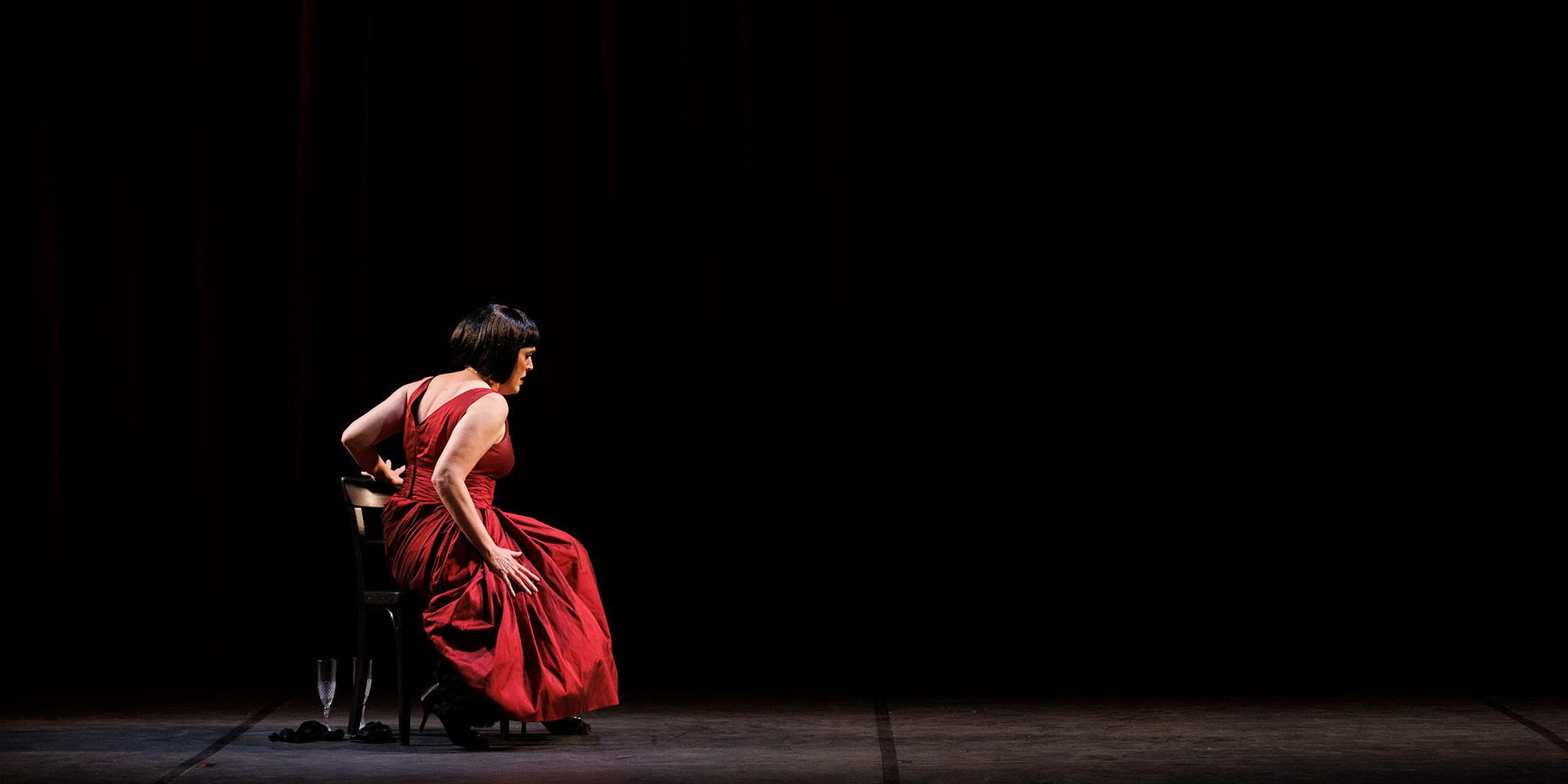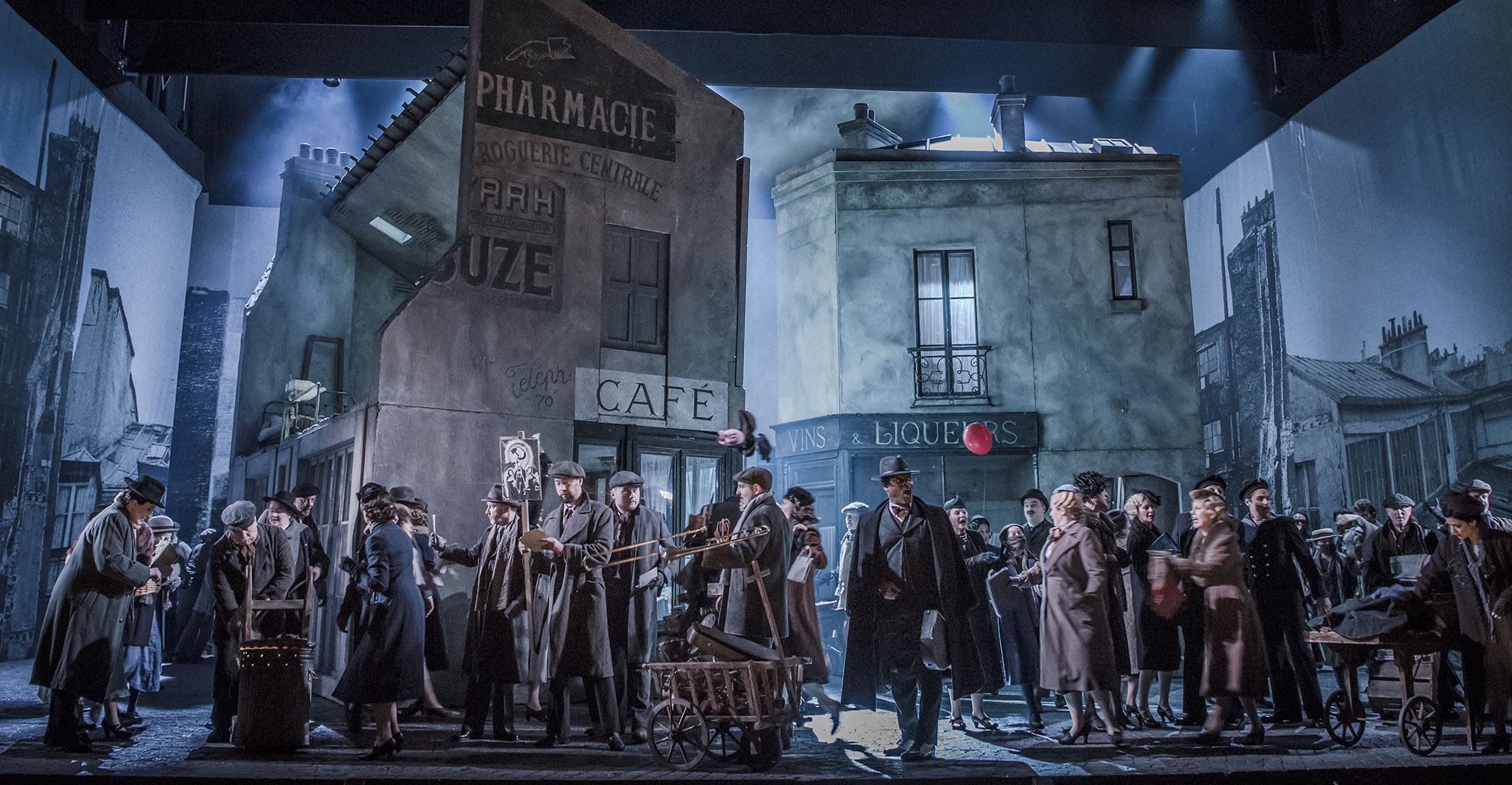Rent
There’s no better-known adaptation of La bohème, than that of the American Rock musical Rent, Jonathan Larsen‘s 1996 musical version of Puccini’s opera.
Unlike the opera, set in 19th century Paris, the play is set in 1990s New York, and French names are updated into American counterparts (Benoît to Benny, Rodolfo to Roger, Musetta to Maureen).
The most significant difference between them both is the ending. Anyone familiar with La bohème will know of its tragic ending, where Mimì succumbs to her illness. Larsen’s Mimì, however, also suffering with ill health (although the disease has been changed to one more common in the 20th century, HIV), survives.
Aside from these changes, Rent follows the story of La bohème closely. If you loved Rent, we bet you will love Puccini’s operatic version!
Moulin Rouge
Director Baz Luhrmann took inspiration from many sources when creating Moulin Rouge, (notably the Greek legend of Orpheus, and Verdi’s La traviata) but the similarities to La bohème are prominent.
Also set in Paris, Moulin Rouge follows the story of bohemian artists, among them a writer and a painter. The main characters, Christian, a hopeless romantic, and Satine a courtesan, suffering with consumption, are Luhrmann’s Rodolfo and Mimì. If you are familiar with La traviata, you will also notice the similarities between Satine and Violetta.
As with La bohème’s Mimì, in true operatic style, Satine succumbs to her disease at the end of the film but not before her and Christian affirm their love for one another.
Moonstruck
Norman Jewison’s 1987 Romantic Comedy Moonstruck is filled with La bohème references. Following an Italian-American family, it makes perfect sense for the film to reference one of the best-known Italian operas in the repertoire.
In one of the most famous scenes from the film, Ronny (Nicholas Cage), who states one of his great loves is opera, takes his brother’s fiancée, Loretta (Cher) to The Met to see a production of La bohème. Loretta’s tears as Mimì sings her aria ‘Donde lieta usci’ (‘To the room that she left’) not only show her reaction to the moment Rodolfo and Mimì split, but also reflect her inner turmoil as she realises she is in love with her fiancé’s brother.
The film also regularly uses music from the score. Notably in the scene where Ronny and Loretta begin their affair Puccini’s ‘O Soave Fanciulla’ (‘Oh you vision of beauty’) can be heard. In the opera, this duet between Rodolfo and Mimì is sung as they both realise they are falling in love with each other.
The Simpsons
You might assume The Simpsons’ episode ‘The Homer of Seville’ would parody Rossini’s famous opera, but in fact, La bohème is the focus.
Following an unfortunate accident, Homer realises he has some serious operatic talents – although only when lying down. Thanks to his newly acquired talents, Homer ends up in a production of the opera singing the role of Rodolfo.
The episode itself is filled with more opera references, from the Springfield Opera House’s uncanny resemblance to the Sydney Opera House, to a cameo from opera superstar Plácido Domingo.
This isn’t the first time The Simpsons has referenced opera in an episode. Take a look at some more opera in TV clips.





